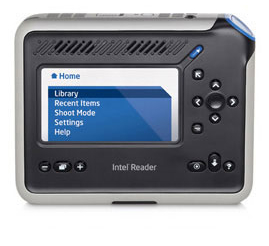 Less than two years after its founding, the Intel-GE Care Innovations joint venture is making some changes to its product line and operating structure to reflect a new emphasis on care coordination and senior living, including aging in place.
Less than two years after its founding, the Intel-GE Care Innovations joint venture is making some changes to its product line and operating structure to reflect a new emphasis on care coordination and senior living, including aging in place.
Care Innovations, which Intel and GE Healthcare set up in January 2011, is considering whether to sell or discontinue Intel Reader, a text-to-speech converter for people with low vision, and has combined business units dealing with disease management and independent living.
"We're going to double down on our whole effort around aging," Care Innovations CEO Louis Burns tells MobiHealthNews. "We decided that it's time to stop viewing the concepts of disease management and home monitoring as two separate entities."
Instead, Care Innovations has consolidated all of its products in these categories under one manager. This product lineup includes the QuietCare motion-sensing system, the Connect touch-screen communications device, the Link personal emergency response system and Guide – formerly Intel Health Guide – a wireless home monitoring hub that has FDA clearance.
With this move, Burns says Care Innovations has "gotten a little smaller" in terms of personnel, but would not give specifics. Some people have been shifted into new jobs, he adds.
As for Reader, Care Innovations will cease its own development of the device, according to Burns, but will continue to provide support to existing customers unless another entity buys the rights. The company has not determined whether it will sell off or discontinue Reader, though Burns says he has been in talks with potential purchasers.
"It's a product I just love," Burns says of Reader. However, it does not square with the company's new focus. "It's really easy to say yes and really hard to say no [to keeping a product]. It's really hard to stop things, but it's the single most important thing someone in my chair needs to do," Burns said, acknowledging the contribution the late Steve Jobs made to this philosophy.
Burns believes the consolidation will help promote better coordination by improving communications between all of those who provide care for a given patient, whether healthcare professionals, family members or the staff of senior living facilities. "We have a very strong belief that enabling the care team is very important," Burns says.
Current Care Innovations offerings are standalone devices, but Burns wants future products to have better connectivity with health IT systems, including electronic health records, as well as with health devices made by others. "We strongly believe that Mom is going to have a combination of health issues, and the activities and technology should reflect that," he says.
Burns will not comment on what the next generation of Care Innovations systems will look like, citing FDA restrictions on premarket promotion of medical devices.
Meantime, Care Innovations is wrapping up an 18-month pilot with health insurer Humana to prove the efficacy of Guide by remotely monitoring and coordinating care for 2,000 people with congestive heart failure nationwide. Burns says that all but 100 or so Guide units have been removed from homes However, it can take as long as four months for some insurance claims to work their way through the system and allow the companies to analyze data from claims, so results may not be available until early next year.



















